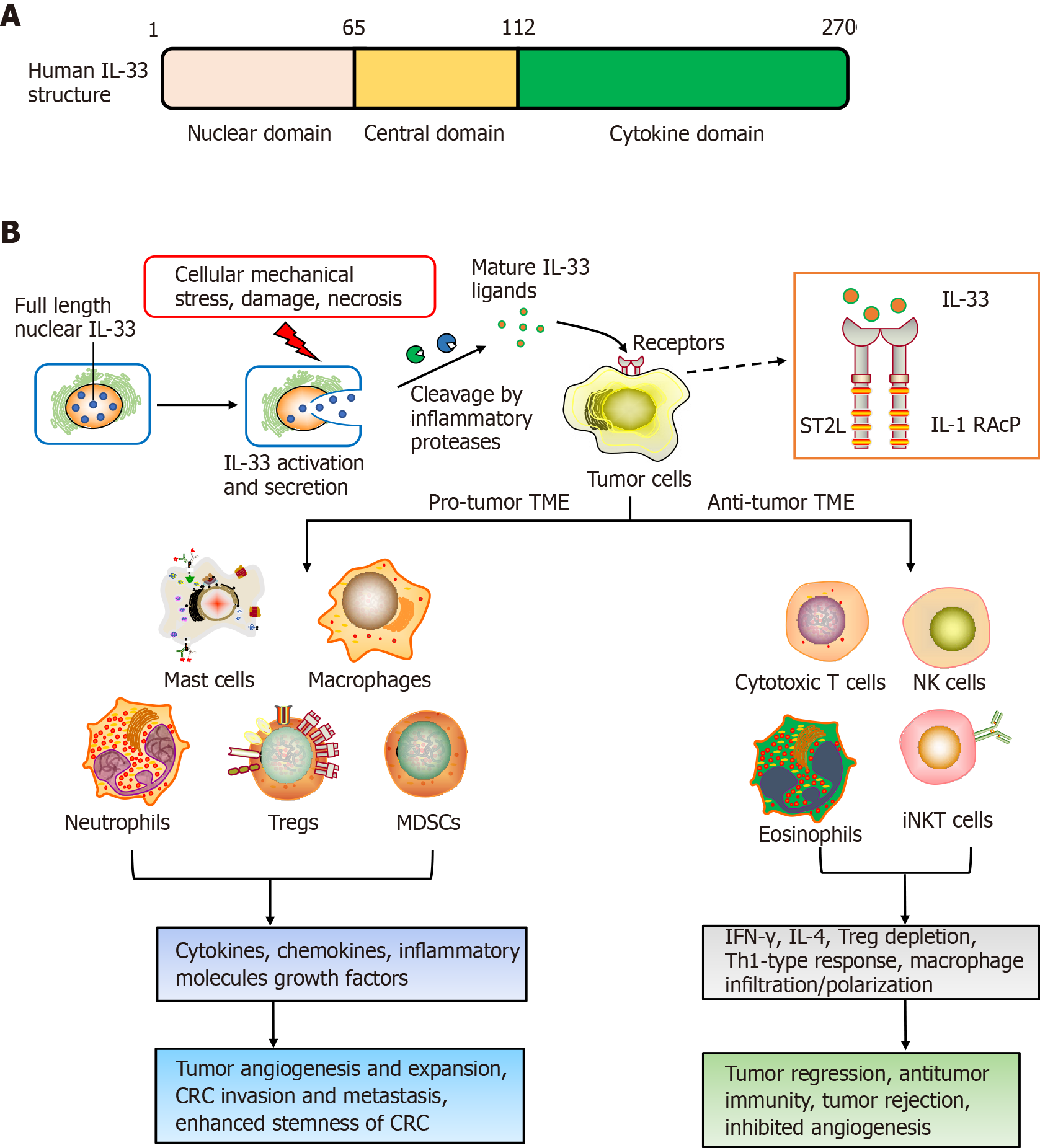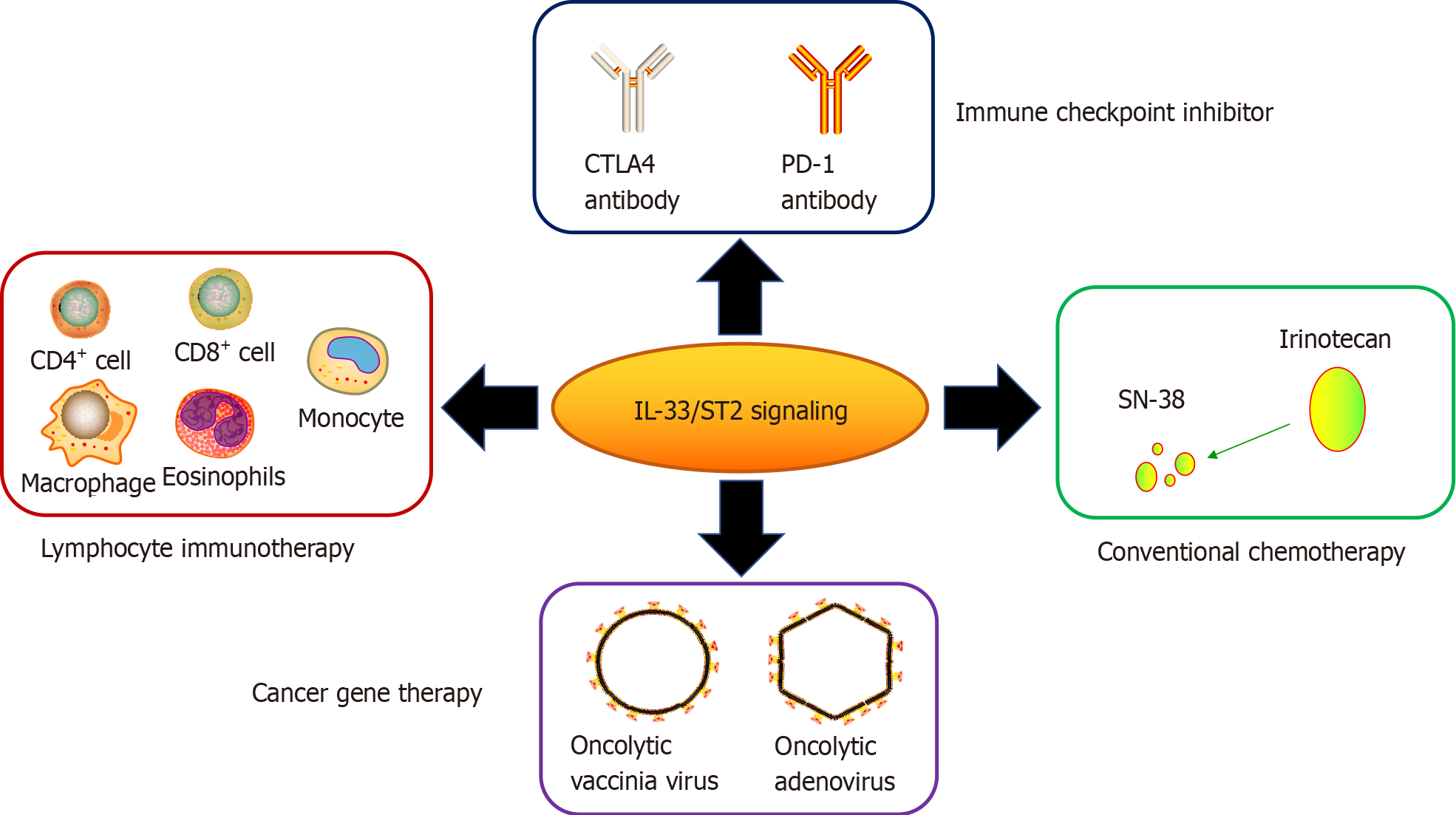Copyright
©The Author(s) 2022.
World J Clin Cases. Jan 7, 2022; 10(1): 23-34
Published online Jan 7, 2022. doi: 10.12998/wjcc.v10.i1.23
Published online Jan 7, 2022. doi: 10.12998/wjcc.v10.i1.23
Figure 1 Structure of interleukin-33, and activation and the role of IL-33/suppressor of tumorigenicity 2 in colorectal cancer promotion and prevention.
A: Structure of human interleukin (IL)-33 protein. IL-33 comprises two evolutionarily conserved nuclear and cytokine domains separated by the highly divergent central domain; B: The role of IL-33/suppressor of tumorigenicity (ST)2 in colorectal cancer (CRC). The full length of IL-33 is cleaved by inflammatory proteases under cellular stress, damage and injury, and is activated and secreted into mature IL-33 ligands. Then, active IL-33 binds to the receptor ST2 ligand and co-receptor IL-1 RAcP on the surface of target cells such as CRC tumor cells, and plays a dual role in cancer, including tumor promotion and antitumor effect through diversified cells in the tumor microenvironment and the molecules they secrete. Tregs: Regulatory T cells; MDSCs: Myeloid-derived suppressor cells; NK cells: Natural killer cells.
Figure 2 The potential therapeutics mediated by interleukin-33/suppressor of tumorigenicity 2 in colorectal cancer.
- Citation: Huang F, Chen WY, Ma J, He XL, Wang JW. Paradoxical role of interleukin-33/suppressor of tumorigenicity 2 in colorectal carcinogenesis: Progress and therapeutic potential. World J Clin Cases 2022; 10(1): 23-34
- URL: https://www.wjgnet.com/2307-8960/full/v10/i1/23.htm
- DOI: https://dx.doi.org/10.12998/wjcc.v10.i1.23










